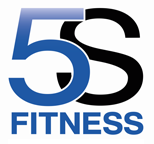Movement screens are a great way to understand a client’s or athlete’s movement capabilities and limitations. However, I do think it is key that people understand that a poor result on a specific movement assessment should NOT be seen as a sure sign of injury risk but as indicators of where improvements in overall performance can be made – making a more robust athlete!
Assessing movement during a warm-up is one of the best ways to gather information about an individual’s movement capabilities and specific areas such as balance and coordination – this is the type of screening I carry out most (every movement of every session is a screen!)
During the first session with a client, I will usually start with a warm-up that allows me to see how they walk and run, squat, lunge, and perform basic exercises like a push-up.
From there, the first gym-based session will involve a variant of a squat, single-leg, hinge, push, and pull exercise. Not only does this give me a lot of information in the first session, but it also limits DOMS and acts as a great intro to the gym. However, if someone needs a lot more work on the basics, a whole session might be dedicated to mastering squat and hinge mechanics.
Aside from assessing movement during a warm-up (or any part of a training session), my favourite screen is the Overhead Squat Assessment (OHSA), as it is one of the quickest ways to gain a huge amount of information.
Do you carry out movement screens? If you do, what are your favourites / which do you find the most useful?
Author
Jason Curtis
If you found this article useful, check out:
My Books: www.jasoncurtis.org
My Online Academy: www.strengthandconditioningcourse.com
